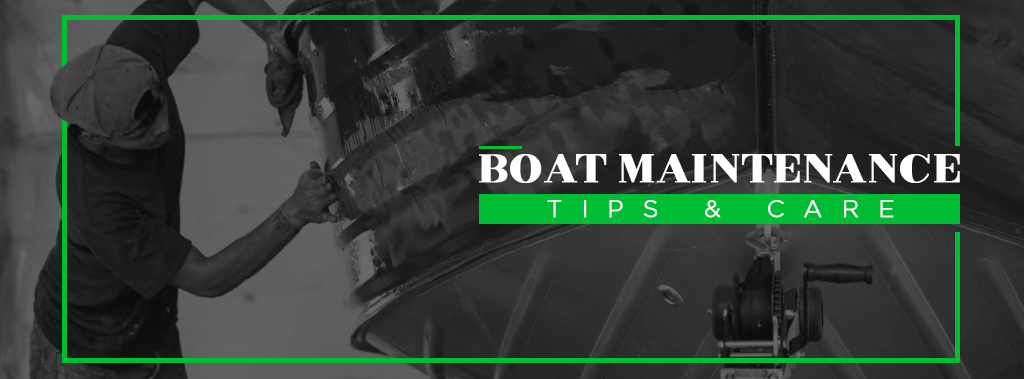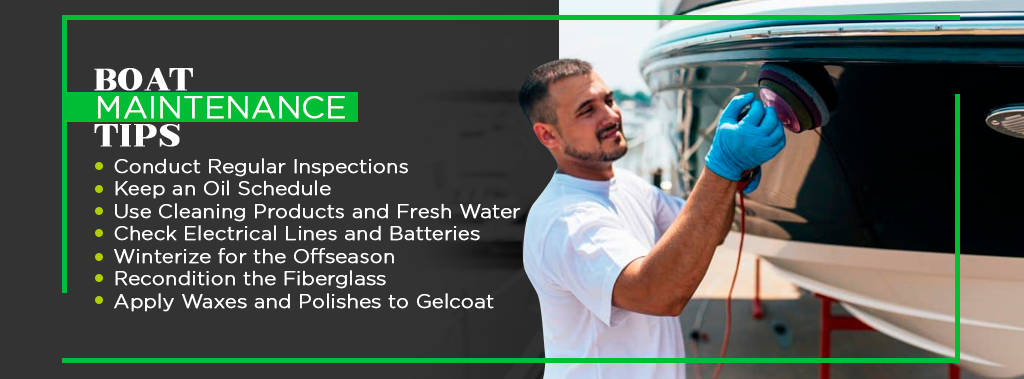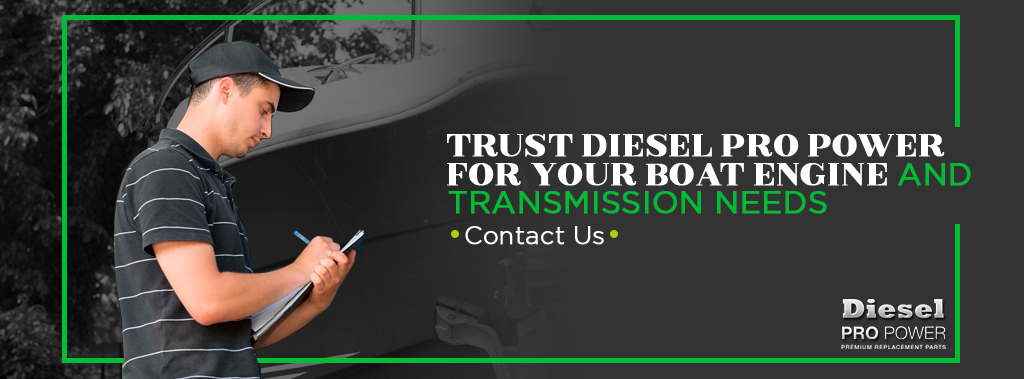
Boating is an excellent way to spend quality time with family and friends or just enjoy a serene day on the water. With a long season of sun and warm weather, you can make the most of every weekend. But if you want to keep your boat running and beautiful for years to come, you’ll need to learn proper maintenance routines. But how do you maintain a boat?
While it isn’t particularly difficult, it does take time and practice. A little knowledge will take you far, and understanding where to start and what tools you’ll need is the best way to begin learning. This guide will provide you with several tips about how to take care of your boat and what to look for while checking it regularly.
Why Boat Maintenance Matters
You can be an expert sailor and have all the highest quality tech and components, but the most important skill you can learn is boat maintenance. Boats require attention and regular care, from the mechanical elements down to the polish. While it does keep your watercraft shining, it’s certainly not all about looks. A clean and well-maintained boat will have a much longer lifespan than one that isn’t cared for properly.
As far as creating a schedule goes, the model, engine type and amount of hours on the water will determine how often a boat should be serviced. Some elements require checking before and after every trip, like looking over the hull and propeller for any damage. Others can go a month or so without needing attention, such as changing the oil and waxing. But keeping up to date on maintenance will prevent you from falling behind or needing to make costly repairs too soon.
Boat Maintenance Tips
While every boat requires a different level of care, regular maintenance is essential to keeping it in top condition. From the internal elements to the shining finish, with the right care, you’ll help your boat last longer and look like new for years to come.
Here are some of the best tips for proper boat maintenance:

1. Conduct Regular Inspections
The first step to maintaining your boat properly is conducting regular inspections. Checking over the boat’s body and components will let you know whether or not it needs heavy cleaning or if any parts need replacement or repair. With thorough inspections on a predetermined schedule as well as before and after each ride, you’ll be able to extend the life of your boat.
On your boat maintenance checklist, you should include:
1. The engine or engines
2. The hull and topsides
3. Any electrical wiring and components
4. The HVAC systems and plumbing in larger boats
5. Any moving parts, like hinges, latches, zippers or tracks
6. Upholstery and canvas elements
As you check each area of the boat, be sure to note any damage or dirt build-up, as it may help you on your next inspection. By keeping a record of what you do each time, you can monitor scrapes and dings and stay on track for fluid changes, replacements and other forms of maintenance. It’s also a good idea to create a written boat maintenance checklist and to keep it with you while you work.
2. Keep an Oil Schedule
Every boat has individual oil requirements based on the type of engine, model and how often you run it. If you keep a schedule of when you change and check your oil, it’ll be easier to tell when you need to do so next. However, you should be sure to change it at least once per month. You can either take your boat to a dealer that’s certified to change your oil or do it on your own. It depends on if you would rather go the easier route or learn more about the way your boat runs.
To change it on your own, you’ll need an oil extractor pump to remove the old fluid, an oil wrench and the time to devote to setting up, working and cleaning up after. You’ll also need to set up a way to keep water running through the intake while working on the oil. It’s not something you can do without practice, so learning in advance is essential.
3. Use Cleaning Products and Fresh Water
There are plenty of boat cleaning products on the market to help you keep your watercraft looking beautiful. At a minimum, you’ll need boat soap, wax, a scrub brush and rags. If you notice any mold, you can typically kill it with a little white vinegar. As far as wax goes, you should remove the old coat with solvents before applying a new one. Be sure to get the right cleaners if your boat has a gelcoat, as some kinds may stain or dissolve the coating. Glass cleaner will help you keep the windows clear and improve visibility.
Saltwater is highly corrosive and can cause the metal elements of your boat to rust. Once you take your boat out of the water, any leftover drops and pools can oxidize. If left too long or repeatedly submerged and docked without a freshwater rinse, it can damage parts to the point of needing replacements. The best way to prevent rust is to rinse your boat with fresh water and dry as much of it off after each ride. Removing moisture can also help you prevent mold growth.
4. Check Electrical Lines and Batteries
Over time and with use, the batteries and electrical lines on boats degrade and take on wear. They require more frequent inspection than most other elements of the boat as they are more prone to damage. By checking the wiring regularly, you can avoid issues that may affect normal boat operations. If you experience any problems while running the boat, faulty electrical lines are often the culprit.
Batteries need attention, too. During the offseason, it’s best to remove them from your boat, clean them, lubricate all the metal components, give them a charge and keep them somewhere safe and dry. To ensure it’ll be in working condition when you reinstall it, you may want to learn the right settings for float charge, how it will react to different temperatures and storage.
5. Winterize for the Offseason
Believe it or not, a lot of damage can occur when your boat is sitting and away for the season, especially if you live in a region with particularly cold or icy winters. How you need to winterize your boat and the lengths you should go to depend on where you store your boat. If you keep it in colder climates, you may need to do more than you would as compared to in more temperate or tropical areas.
Whatever your needs, there are plenty of tarps, covers, sheds and storage options available. They all come at different prices, so budget is another significant factor. If you plan on storing it on your primary property, a shed or cover may be the best option. If you’re more concerned about the weather or want a safer option for storing it at a vacation house, there are indoor docks and storage solutions, some of which even offer climate-controlled bays.
6. Recondition the Fiberglass
The hull of your watercraft can take on a lot of wear during the regular boating season. Whether you strike something, debris in the water hits your boat or you expose the hull to grit and sand, the more you use it, the weaker the fiberglass gets. One of the best ways to prevent damage and keep the fiberglass looking beautiful is by cleaning and reconditioning it regularly.
Applying a fiberglass reconditioning compound will help to remove oxidization and water and mineral marks as well as provide a protective layer to create a smooth surface. The compound will make it easier to deflect water and oils and glide through the waves.
7. Apply Waxes and Polishes to Gelcoat
The outer surfaces of your boat are just as important as the inner mechanics. You need to ensure your boat causes the least amount of friction possible, as a rough hull or scratched body can reduce efficiency slightly. Also, a well-maintained boat looks far more attractive. Despite being strong, gelcoats require proper care and attention. The wrong cleaners can damage them and dissolve the surface. If you stay on top of cleaning, you can prevent the gelcoat from wearing out and staining.
In addition, a little wax and polish can go a long way. By cleaning your boat and reapplying a coat of product in the corresponding areas, you’ll keep it friction-free and looking beautiful. For more specific information on how to apply what and when, you can research the elements specific to your boat or ask your dealer.
Trust Diesel Pro Power for Your Boat Engine and Transmission Needs
Boat maintenance requires time and attention, but you also need to be sure you’re using the proper tools and parts. If you come across a damaged or worn engine or transmission component, you need to replace it with a reliable and high-quality part. At Diesel Pro Power, we provide you with nothing but the best. Our marine engine elements will give you the confidence that comes with installing components from a trustworthy dealer.
Diesel Pro Power specializes in Detroit Diesel, Cummins, Twin Disc and Allison Marine parts. Whether you’re trying to find a specific part or are browsing for the future, our team of professionals can help answer any questions you may have. We aim to deliver the best service possible so you can get back out on the water faster.
For more information about what we have to offer, contact us or browse our resources.



 Free US Calls: 1-888-433-4735
Free US Calls: 1-888-433-4735 International: 305-545-5588
International: 305-545-5588
